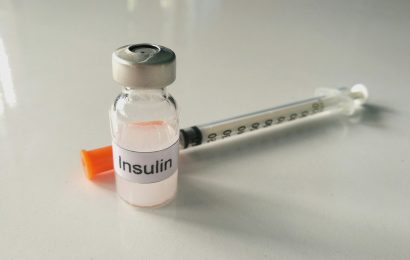You probably know that eye damage (retinopathy) is a major complication of diabetes. So when vision blurs, it’s normal to think the worst. But diabetes can cause blurred vision in several other ways, some of which are reversible.
I’m embarrassed to admit I only recently found out that blurred vision is a symptom of diabetes, even without any retinal damage. When blood glucose levels go up, blood gets thicker. Thicker blood pulls in more fluid from surrounding tissues, including the lenses of the eye, impacting the ability to focus.
-- Keep an eye on your vision! Learn about preventive steps and treatments for diabetic retinopathy from retinal specialist Dr. Charles Wykoff. >>
Blood sugar and blurry vision
According to WebMD, [Blurred vision] could just be a temporary problem that develops rapidly and is caused by high blood sugar levels. High blood sugar causes the lens of the eye to swell, which changes your ability to see.
Changing the shape of the lens naturally throws off vision. This can be a chronic, 24/7 kind of problem, or it can occur only after a high-carb meal, when glucose is way up. The Harvard Medical School Family Health Guide says that after-meal blurriness can be prevented by avoiding high-carb meals.
The cure for chronic, all-the-time blurriness is to get blood glucose down to normal range before meals. It may take as long three months of relatively normal blood glucose levels before vision returns to your baseline normal.
Diabetes can also cause blurriness or double vision due to hypoglycemia (low blood glucose). In this case, lens shape is probably not to blame. Low blood glucose can make it hard for the brain to focus on what the eye is seeing. Vision usually returns to normal when glucose levels rise.
If blurriness doesn’t go away when glucose levels are close to normal, you might have retinopathy. That’s a condition in which high glucose levels damage the blood vessels in the retina, or the back of the eye, which can cause blindness. Fortunately, it’s preventable and treatable.
Diabetes and your eyes: Dilated eye exams
The American Diabetes Association (ADA) suggests that people with diabetes have regular “dilated” eye exams. Dilated means a drop will be put in the eye to open the pupil wide, so an examiner can see all of what’s inside. ADA’s guidelines include:
• An annual dilated eye exam if you are between 10 and 29 years old and have had Type 1 diabetes for at least 5 years. (Those with Type 2 are recommended to receive a dilated eye exam shortly after diagnosis.)
• An annual dilated eye exam if you are 30 or older, no matter how long you’ve had diabetes.
• A dilated eye exam if you are pregnant or planning to get pregnant.
• A dilated eye exam if you experience any changes in your vision.
Other causes of blurry vision
High blood pressure can also cause vision problems by damaging the optic nerve or through brain damage resulting from stroke. High blood pressure is very common in diabetes, so it’s important to keep blood pressure close to normal range as well.
Other eye problems can cause blurriness and blindness. These include age-related macular degeneration (AMD). In AMD, the retina gradually stops working for no clear reason, though some studies have found people with diabetes are more likely to have AMD. According to AMD.org, eating more green vegetables is one way to try to prevent AMD.
Cataracts are strongly associated with diabetes. They are a clouding of the lens in the eye that affects vision. It is thought that proteins in the eye fluid clump up for some reason and cloud the lens. Cataracts are more common in people with diabetes and in smokers. The National Eye Institute says that eating leafy green vegetable and keeping direct sun out of your eyes are good prevention measures.
Steps for diabetic eye care
In general, keeping near-normal blood glucose and eating right seem crucial to eye care. Writing in Diabetes Self-Management, Linnea Hagberg, RD, suggests “consuming leafy green vegetables like spinach, kale, collards, and broccoli.”
Hagberg also recommends corn, kiwifruit, red grapes, spinach, zucchini, yellow squash, orange peppers, orange juice, egg yolks, and Vitamin E as being good prevention for AMD and cataracts. For general diabetes eye health, she says:
• Wear sunglasses that protect the eyes from ultraviolet rays.
• Keep blood glucose under control.
• Stop smoking or cut back as much as possible.
• Choose brightly and deeply colored fruits and vegetables as often as possible. Include leafy green vegetables in your meals several times a week.
• Include plenty of vitamin C in your diet by choosing several daily servings of foods such as cantaloupe, strawberries, citrus fruits, kiwifruit, mango, papaya, broccoli, Brussels sprouts, sweet peppers, tomatoes, and cauliflower.
• Eat fatty fish two or three times a week. Limit total fat and commercially processed baked goods and snack foods.
• Have an annual eye exam (unless your doctor advises a different schedule) that includes dilating the pupils.
Have you experienced visual changes at different glucose levels? I’d be interested in hearing about it.
Want to learn more about keeping your eyes healthy with diabetes? Read “Eating for Better Vision and Healthy Eyes” and “Keeping Your Eyes Healthy” and “Protect Your Eyes From Diabetes” and watch “Diabetes and Your Eyes.”





